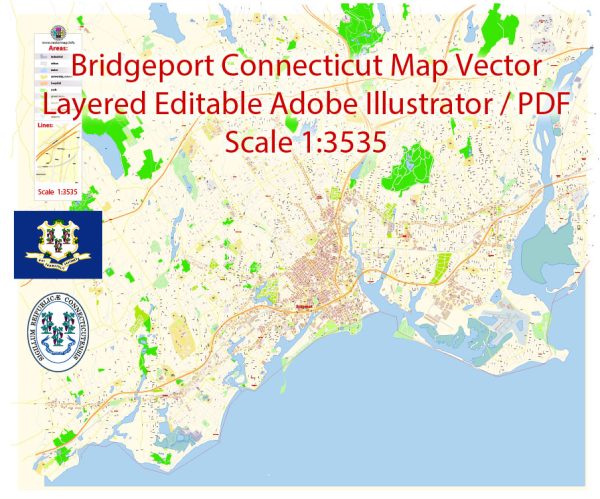Bridgeport, Connecticut, has a rich history of urban development that reflects the broader trends and challenges faced by many American cities. Here is an overview of the city’s urban development history:
- Early Settlement and Industrialization: Bridgeport was originally settled in the mid-17th century by English colonists and later became an important manufacturing hub during the 19th century. The city’s proximity to Long Island Sound and its access to transportation routes, including waterways and railroads, played a crucial role in its early industrial development. This period saw the growth of factories and shipbuilding, making Bridgeport a significant industrial center.
- Emergence of the Firearms Industry: In the mid-19th century, Bridgeport became known for its firearms industry, led by companies like the Remington Arms Company and the Colt’s Manufacturing Company. The production of firearms played a pivotal role in the city’s economy and development.
- Growth and Immigration: As industries expanded, Bridgeport experienced significant population growth and immigration. Waves of Irish, Italian, and Eastern European immigrants settled in the city, contributing to its cultural diversity. By the early 20th century, Bridgeport was a bustling and ethnically diverse urban center.
- Urban Renewal and Redevelopment: In the mid-20th century, like many other American cities, Bridgeport experienced the effects of deindustrialization, suburbanization, and population decline. Urban renewal efforts were launched to address blight and decay, resulting in the demolition of older buildings and the construction of new infrastructure, including highways and public housing projects.
- Economic Challenges: Bridgeport faced economic challenges during the latter half of the 20th century. The decline of its manufacturing base, coupled with social and economic issues, led to urban decay, poverty, and crime. This era was marked by disinvestment in some neighborhoods and the flight of residents to the suburbs.
- Contemporary Redevelopment: In recent years, Bridgeport has made efforts to revitalize the city and attract new investment. This includes initiatives to restore historic neighborhoods, develop the waterfront, and diversify the local economy. The city has also seen the construction of new cultural and entertainment venues, such as the Ballpark at Harbor Yard and the Webster Bank Arena, which aim to enhance the quality of life for residents and attract visitors.
- Challenges and Opportunities: Bridgeport still faces challenges related to poverty, education, and economic disparities. However, it also possesses significant assets, such as its location on Long Island Sound, proximity to New York City, and a rich history that can be leveraged for redevelopment. The city’s leadership continues to work on addressing these issues and shaping its future urban development.
Bridgeport’s history of urban development reflects the broader narrative of American cities, from industrialization and immigration to deindustrialization and revitalization. Its future will depend on its ability to adapt to changing economic and social dynamics while preserving its unique character and history.


 Author: Kirill Shrayber, Ph.D.
Author: Kirill Shrayber, Ph.D.